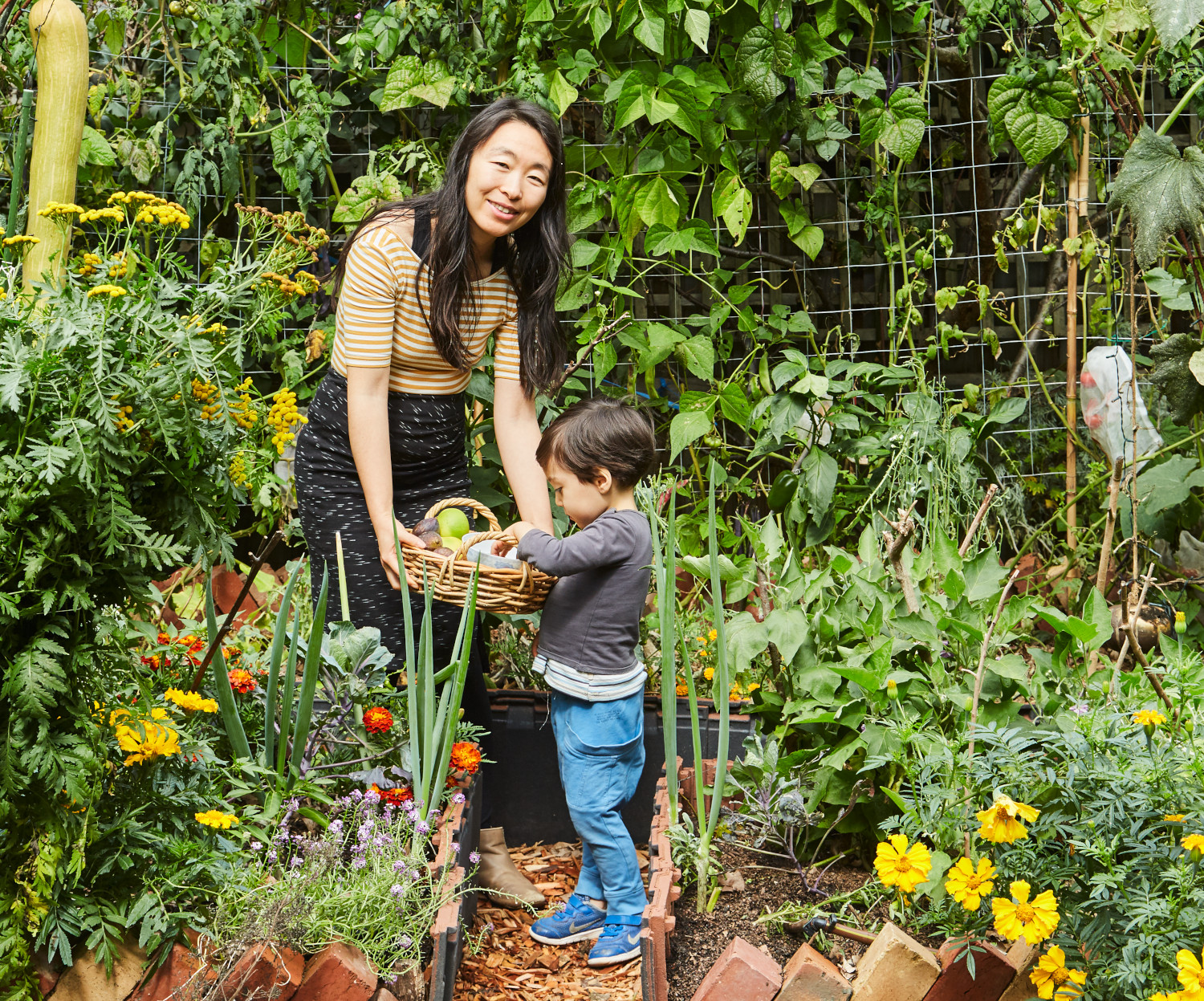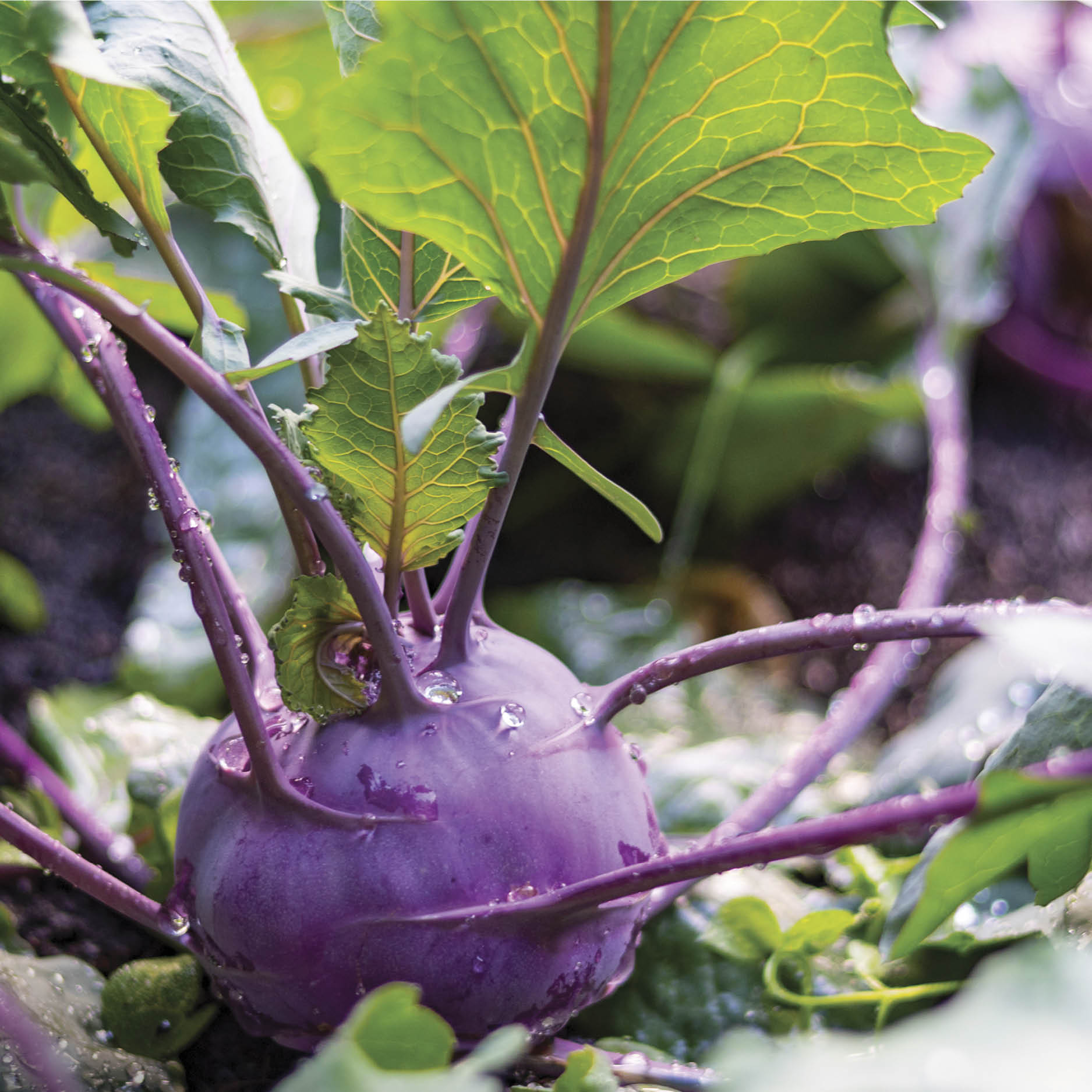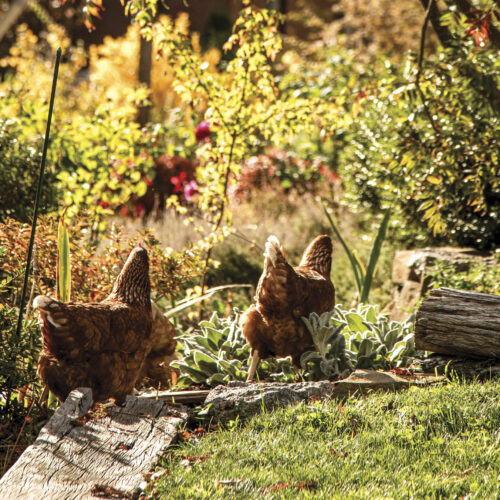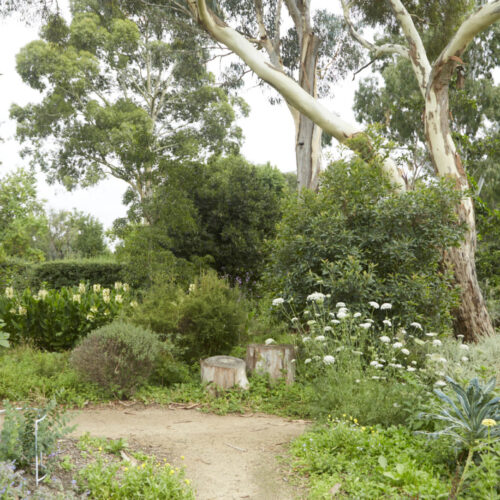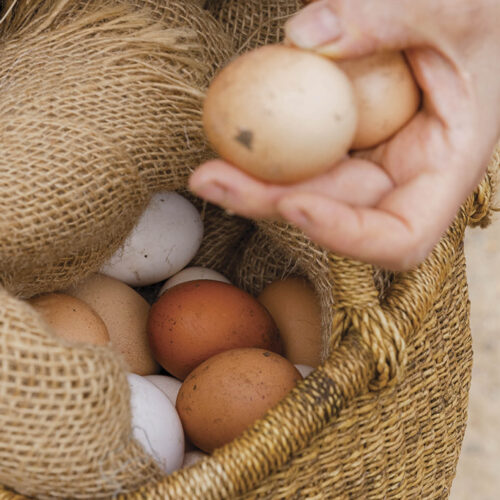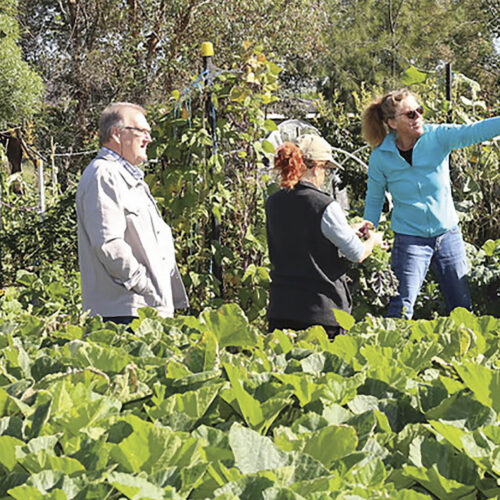Gardening success in Melbourne
2021-11-23T01:32:08+11:00
Jian Liu has gone from a Beijing concrete jungle to a lush Melbourne backyard, where she and her husband have created a wonderful food forest.
I was born into a concrete jungle, in the very heart of Beijing, China – perhaps an unlikely place for a gardener to be born. We lived with my grandmother in one of the oldest hutongs in Beijing. While we didn’t have our own toilet, bathroom or hot water, we were fortunate to have a little courtyard.
One of my earliest memories is of standing beneath her giant walnut tree. It was there that my grandma taught me the skill of knocking off the ripe walnuts with sticks that seemed to reach straight into the sky, dodging the nuts as they rained from the heavens, and the careful art of cracking the hard casing without damaging the brain-like walnut inside.
I delighted in savouring every crumb of the sweet flesh, and with each mouthful I tasted, a flame was ignited deep inside me of the absolute joy of growing your own food.
Fast forward to the present, over three decades later, I now have children and finally a home of our own in leafy suburbia in Melbourne – a place to create the food forest I have dreamt of for so long.
Our suburban food forest
Driven by a desire to provide organic produce for my family, and to cultivate in our children a deep connection to nature and the origins of their food, my husband and I made the decision to convert our entire backyard to a garden that worked and produced for us, not the other way around.
The result: our backyard jungle is now a fertile space filled with abundance. It’s teeming with colour and life, filled with over 80 varieties of fruit and countless types of heirloom vegies each season, supported by a productive pond, chicken coop, two water tanks, four worm farms, three compost bins, solar panels and a greenhouse to extend our growing season. All this in a standard-sized backyard, which not only provides our family with most of our fruit and vegetable needs, but enough to share with friends and neighbours.
We had a clear vision for our garden: to create ‘edible beauty’ – a space that would feed and stimulate us in every sense, belly and soul.
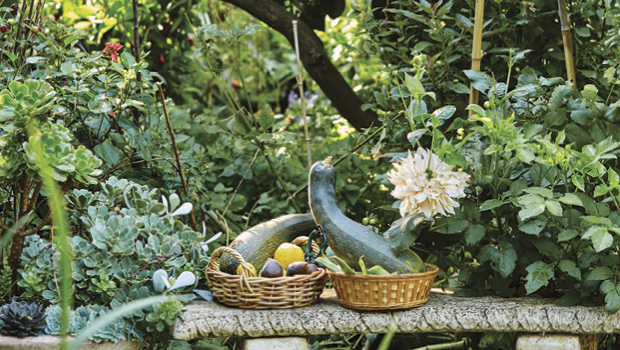
Challenges and setbacks
How we got here was quite a journey, with challenges at every turn. The first was a series of agonising decisions, which centred around tearing up our real estate-brochure-worthy backyard.
I took a week off work in winter to dig up every thread of highly-invasive couch grass by hand, sifting through it with a sieve, while covered in mud. My husband spent the better half of a year digging out a stubborn hedge of dietes and clivia.
More recently, we finally decided to remove a large section of nicely laid concrete, against the advice of everyone we asked. In this space, we have built a greenhouse, a berry patch, and many other vegie beds, taking advantage of one of the few full-sun locations in our yard. It also means that rather than having water run off the concrete, we are now able to store water directly in our soil and have brought life back to a barren space.
Another challenge was discovering along the way that a long time ago, a swamp used to run through where we lived. This means that our soil is black sand as deep as you can dig. Devoid of nutrients or the ability to hold water, not much could grow in our native soil.
Re-using and recycling
Sustainability is at the heart of our garden. We recycle not only all our kitchen scraps, but those of 20 locals who drop off their scraps to us. Our worm farms and compost bins produce a regular supply of ‘black gold’ and nutrient-rich compost essential to enrich our poor soil. We no longer purchase mulch in plastic; instead, we rely on many free local sources, which are as varied as coffee husks and autumn leaves, to Christmas trees we drag back each January from nature strips.
Our couch grass has been replaced by living compost paths lined with bush mulch, which interestingly came from a large tree that fell onto and damaged our neighbour’s house. The tree was chipped laboriously by an arborist over two nights; and given the noise kept us up, we decided we may as well make a good situation out of it and put it to use in our garden!
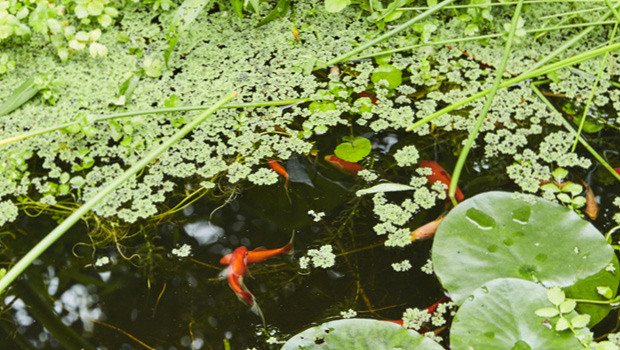
Our algae-filled pond has now been turned into a living productive space that not only grows water chestnut, Vietnamese mint and watercress, but also produces free fertiliser in the form of nutrient-dense azolla. The azolla that we grow on the pond serves many functions: it provides a platform for bees and insects to drink, fixes nitrogen from the air and also soaks up nutrients excreted by our fish, thereby acting as a natural pond filter. Keep in mind, though, that azolla can smother a pond, so regularly remove it. It can be carried by wild ducks from one pond to another.
We take pride in salvaging as much as we can find. Our primary garden beds are built from recycled bricks from neighbours. They have been creatively stacked to create a functional, yet attractive key-hole bed that will last for decades. Our chicken run is built from an abandoned cubby, and the remaining wood from the cubby has been used to build a climbing frame for gourds, which also provides valuable shade to our chickens from the afternoon sun.
Making the most of our space
Being on a small block, we have had to be creative to make the most of our space and available light. We have 10 arches in the garden, which in summer are heavy with countless varieties of unusual pumpkins, gourds and beans; walking through the garden becomes like weaving through a jungle of vegetables.
We grow companion flowers among our edibles: under the canopy of our mandarin, fig, tamarillo and babaco trees, flowers such as alyssum, marigold, viola, nasturtium and pennyroyal flourish. Interestingly, we have seen the yields from our fruit trees double since under-planting them with a living mulch. We attribute this to the beneficial effect of growing diverse plants to create a rich living soil, and the power of attracting predatory insects to make short work of the pests.
We have also created a ‘wall of food’ – a living edible wall about 2.5m tall in the sunniest part of our garden, designed to capture as much sunshine as our shady block will allow. It was created with bamboo cut from a neighbour’s garden, and wire netting. This wall is covered with snow peas, golden and purple peas in winter, and in summer heirloom tomatoes, beans and cucumbers weave through the netting. This allows the kids to hide behind this green wall and gorge themselves silly on seasonal vegies – they love hiding in their secret passage and eating straight off the plants!
Looking forward
When we have time to take a step back, and breathe it all in, it hits us just how much we’ve achieved over
a few short years (with busy, full-time jobs, juggling young children) and all this by two self-proclaimed ‘unhandy’ people (with help from my family on the way).
While it was not easy, nothing truly fulfilling ever is and the rewards speak for themselves. We look forward to continuing to push the boundaries of just how much food can be grown in a standard backyard, and already have plans for the frontyard expansion!
A few of Jian’s favourite exotics
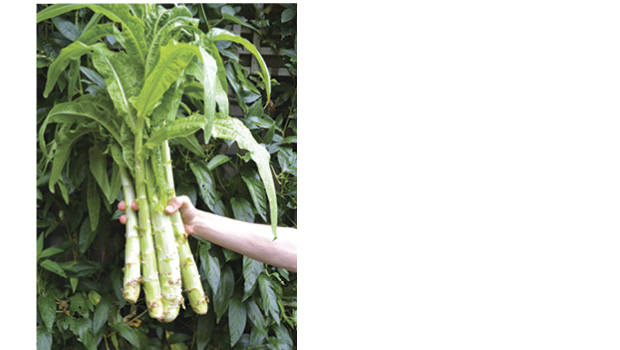
Celtuce
(Lactuca sativa var. augustana)
Celtuce is a variety of lettuce you won’t find in the shops. Unlike standard lettuce the main drawcard is not the leaves but the delicious thick stem. While it’s grown in inner-city community gardens, until recently it’s been virtually unheard of outside China and in the wider Australian gardening community. Now you’re likely to see it popping up as a trendy ingredient on the menus of high-end restaurants.
Taste-wise it is mild and understated, but addictive. It has a delicate crispy texture, with a translucent quality to it. To prepare, use a vegie peeler to shave off the tough outer skin to reveal its tender green interior. We like to slice the stem at an angle into thin pieces, and stir-fry with garlic and soy sauce – simple but utterly delectable.
You can also julienne it and use it in salads. It is so versatile it soaks up the flavours of any dish that it’s paired with.
Celtuce can be planted in all climates, in all but the hottest time of the year. In cold and warm temperate regions, start it under cover in winter and plant out in spring. For the thickest, juiciest stems, plant when the weather is cooler (late summer, winter or early spring). It’s relatively low-fuss like lettuce, and once the stem is thick enough to harvest, chop it down at the base.
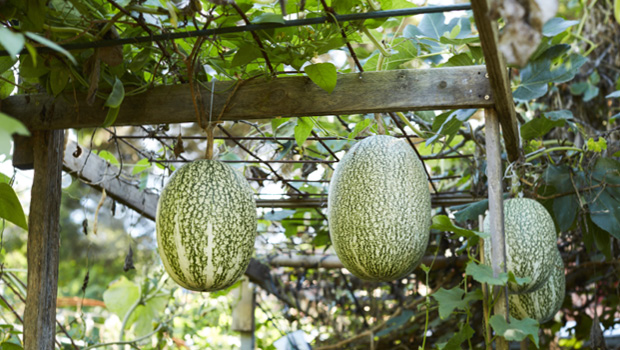 Fig-leaf gourd
Fig-leaf gourd
(Cucurbita ficifolia)
Fig-leaf gourd, also known as chilacayote, is the most prolific vegetable in our garden, and we call it our famine plant. A single vine is enough to feed a neighbourhood! It is entirely resistant to mildew – a game-changer for those in humid areas. In areas with only mild frosts, it’s a perennial and can live for many years, growing stronger and more prolific in its second to third year. In colder and more frosty regions, plant in spring and grow as an annual.
Our vine produced 30 melons in its first year, and over 60 in its second – each weighing in close to 6kg. That’s over 300kg of produce from one plant! It is a vine that could take over the world if left unchecked, so needs heavy pruning or a large area to sprawl across. We trained ours over a pergola and over an inedible fig tree to save space. In cool areas you should start the seeds early indoors, around June/July to give it a headstart.
The outside of the gourd looks like watermelon but the inside is mild, a bit like zucchini. You can also pick the fruit when young and eat it whole, skin and all. It’s delicious grated in salads and stir fried. When left to fully mature, the fruit can store in the pantry for years and is nice braised in a soup, or the slightly stringy inside can be used like spaghetti squash, as a noodle in soups or salads.
Native to South America, we find it to be a versatile substitute for meat in Mexican dishes. Interestingly, it’s more commonly used in sweet dishes throughout its native continent, and we’ve found it a yummy addition to cakes.
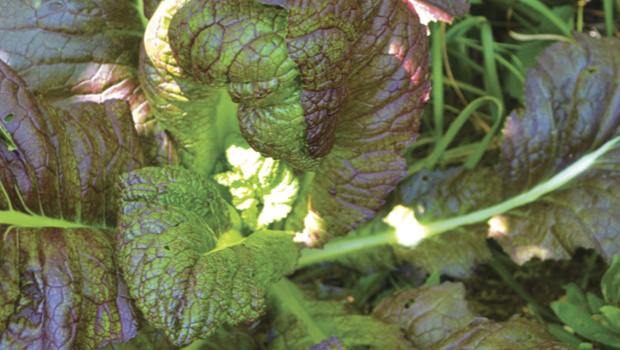
Giant red mustard
(Brassica juncea)
This leafy veg is a favourite of ours, as it embodies our philosophy of edible beauty. The huge bronze-maroon leaves can grow to almost 1m in length, and it is striking when used in a garden border.
Like other mustards, it’s easy to grow but is slower to bolt if watered well, so it’s suitable for warmer areas (I’d keep these to shady spots in the tropics), and seeds are best planted in spring and autumn in most regions. We’d grow it just for its looks, but the flavour also packs a big punch. When the leaves are large and mature, they taste like wasabi and add a bit of a kick to salads. Smaller leaves are tender and great stir-fried or even fermented/pickled to last year-round.
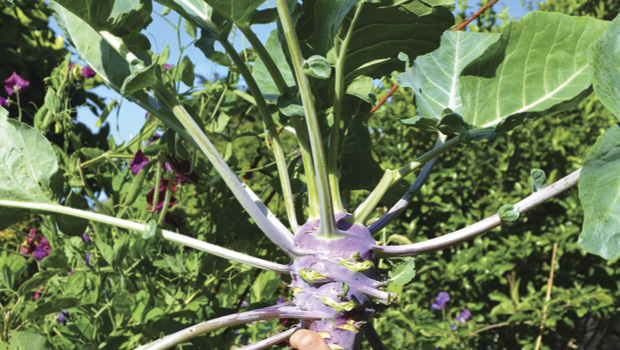
Kohlrabi
(Brassica oleracea Gongylodes Group)
A row of kohlrabi in a garden bed is a sight to behold; it always makes me think that purple alien spaceships have descended on the earth! Kohlrabi is such a delicious vegetable, I don’t understand why it’s not grown and sold more.
The taste is a revelation – like the best mix of broccoli, cabbage and radish, but sweeter. We generally eat it raw, as the whole family gobbles it up before it makes it to a dish. But it is also utterly delicious in soups and roasted, so nutty and buttery when cooked. The leaves are similar to Russian kale so throw those into your dish too.
Like other brassicas, kohlrabi is best planted in late summer or early spring to ensure the stem bulbs out quickly and remains tender. In the tropics and subtropics, sow seed from March to August, in cooler temperate regions, from September to April.
Jian Liu is one of our regular writers at OG and has written about keeping chooks and composting. You can get back issues of the magazine and read her features — she has lots of tips for growing your own food in the urban space!

